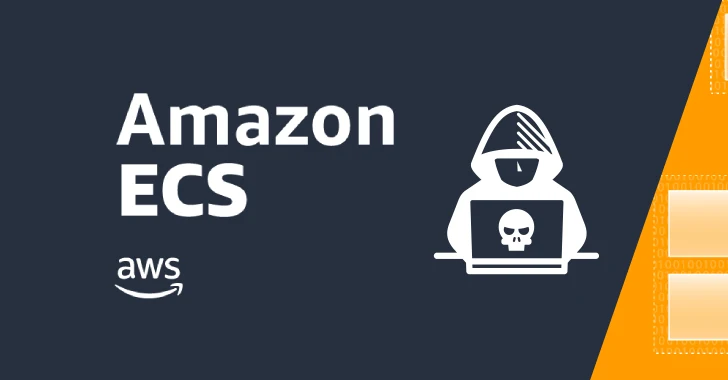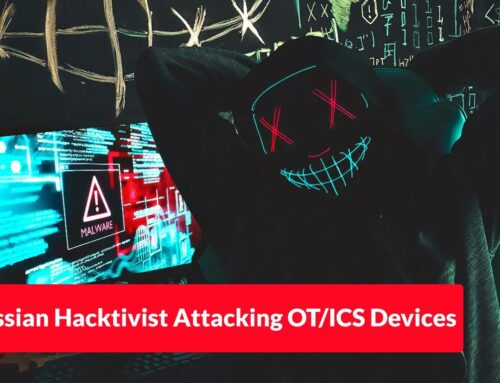
Researchers Uncover ECScape Flaw in Amazon ECS Enabling Cross-Task Credential Theft
Cloud security is a shared responsibility, and while service providers like Amazon Web Services (AWS) build robust infrastructure, the configuration and management of applications within that infrastructure remain paramount. A recent revelation from Sweet Security researcher Naor Haziz underscores this critical point, detailing a severe vulnerability dubbed ECScape within Amazon Elastic Container Service (ECS) that could lead to significant cloud compromises.
Understanding ECScape: A Critical ECS Vulnerability
The ECScape flaw represents a sophisticated “end-to-end privilege escalation chain” within Amazon ECS. This isn’t merely a theoretical exploit; researchers have demonstrated its effective utilization. At its core, ECScape allows an attacker who has gained a foothold within an ECS task to escalate their privileges, move laterally across the cloud environment, access highly sensitive data, and ultimately seize control of the entire cloud infrastructure.
The impact of such an attack is multifaceted. Imagine a scenario where a seemingly isolated container, perhaps running a publicly accessible web service, becomes the jumping-off point for an attacker to compromise your entire AWS account. This could lead to:
- Data Exfiltration: Sensitive customer data, intellectual property, or proprietary information could be stolen.
- Resource Manipulation: Attackers could deploy malicious workloads, mine cryptocurrency, or disrupt critical services.
- Operational Disruption: Business operations could be halted or severely impacted, leading to significant financial losses and reputational damage.
- Compliance Violations: Data breaches resulting from privilege escalation can lead to severe penalties under regulations like GDPR, HIPAA, or PCI DSS.
The Anatomy of the Attack: Cross-Task Credential Theft
While the full technical details of ECScape are complex, the core mechanism involves a cross-task credential theft. In AWS ECS, tasks are isolated units of computation. However, ECScape leverages a vulnerability that breaks this isolation, allowing an attacker to steal credentials from other tasks running within the same ECS cluster. These stolen credentials can then be used to assume roles with higher privileges, paving the way for the “end-to-end privilege escalation chain.”
Further details on the specific techniques used for credential theft and privilege escalation were presented by Sweet Security researcher Naor Haziz. While precise CVE numbers for this specific flaw are often assigned retroactively or might be encapsulated under broader security advisories related to common misconfigurations if applicable, it is crucial for organizations utilizing ECS to understand the profound implications.
Why ECScape Matters to Your Cloud Security
Amazon ECS is a widely adopted container orchestration service, powering a vast number of mission-critical applications for organizations globally. The discovery of ECScape highlights a crucial aspect of cloud security: the interplay between the cloud provider’s infrastructure security and the customer’s application-level security and configuration choices. Even with robust underlying platforms, subtle vulnerabilities or configuration oversights can create pathways for sophisticated attacks.
This research serves as a stark reminder that continuous vigilance, robust security practices, and a deep understanding of cloud service mechanisms are non-negotiable for anyone operating in AWS. It underscores the importance of a layered security approach and the principle of least privilege, even within containerized environments.
Remediation Actions and Best Practices
Mitigating the risks posed by vulnerabilities like ECScape requires a proactive and multi-faceted approach. While AWS works to patch underlying vulnerabilities, organizations must implement robust security practices within their ECS deployments.
- Stay Updated: Regularly monitor AWS security advisories and promptly apply any patches or configuration changes recommended by AWS for ECS.
- Implement Least Privilege: Ensure that your ECS task roles and IAM policies grant only the absolute minimum permissions necessary for tasks to function. Avoid broad permissions like
*.*. - Network Segmentation: Implement strict network segmentation within your VPC and security groups to limit lateral movement, even if a task is compromised.
- Monitor and Log: Enable comprehensive logging for ECS, CloudTrail, VPC Flow Logs, and relevant services. Use security information and event management (SIEM) systems to analyze these logs for anomalous activity.
- Vulnerability Scanning: Regularly scan your container images for known vulnerabilities using tools like Amazon ECR image scanning or third-party container security platforms.
- Runtime Protection: Consider implementing runtime security solutions that can detect and prevent malicious activity within running containers.
- Dedicated AMI and Task Definition Review: Regularly review your custom AMIs and ECS task definitions to ensure they adhere to security best practices and do not inadvertently introduce vulnerabilities.
- Secrets Management: Use AWS Secrets Manager or AWS Systems Manager Parameter Store for managing sensitive credentials, rather than hardcoding them in container images or environment variables.
Recommended Tools for ECS Security
Leveraging specialized tools can significantly enhance your ability to detect, prevent, and respond to threats in your ECS environment.
| Tool Name | Purpose | Link |
|---|---|---|
| Amazon GuardDuty | Threat detection service that continuously monitors for malicious activity and unauthorized behavior in AWS accounts. | https://aws.amazon.com/guardduty/ |
| AWS Security Hub | Aggregates security alerts and findings from multiple AWS services and partners, and offers automated security checks. | https://aws.amazon.com/security-hub/ |
| Amazon ECR Scan Findings | Built-in vulnerability scanning for container images stored in Amazon ECR. | https://docs.aws.amazon.com/AmazonECR/latest/userguide/image-scanning.html |
| Falco | Open-source runtime security tool that detects abnormal behavior in containerized environments. | https://falco.org/ |
| Scout Suite | Open-source multi-cloud security auditing tool that checks for misconfigurations. | https://github.com/nccgroup/ScoutSuite |
Conclusion: Fortifying Your AWS ECS Defenses
The ECScape vulnerability serves as a potent reminder that cloud security is an ongoing journey, not a destination. Even in highly managed services like AWS ECS, the potential for sophisticated privilege escalation chains exists. Organizations leveraging containerized workloads in AWS must prioritize comprehensive security measures, from least-privilege IAM policies and rigorous network segmentation to continuous monitoring and proactive vulnerability management. By understanding the nature of threats like ECScape and implementing the recommended best practices, organizations can significantly strengthen their cloud posture and protect their critical assets.





